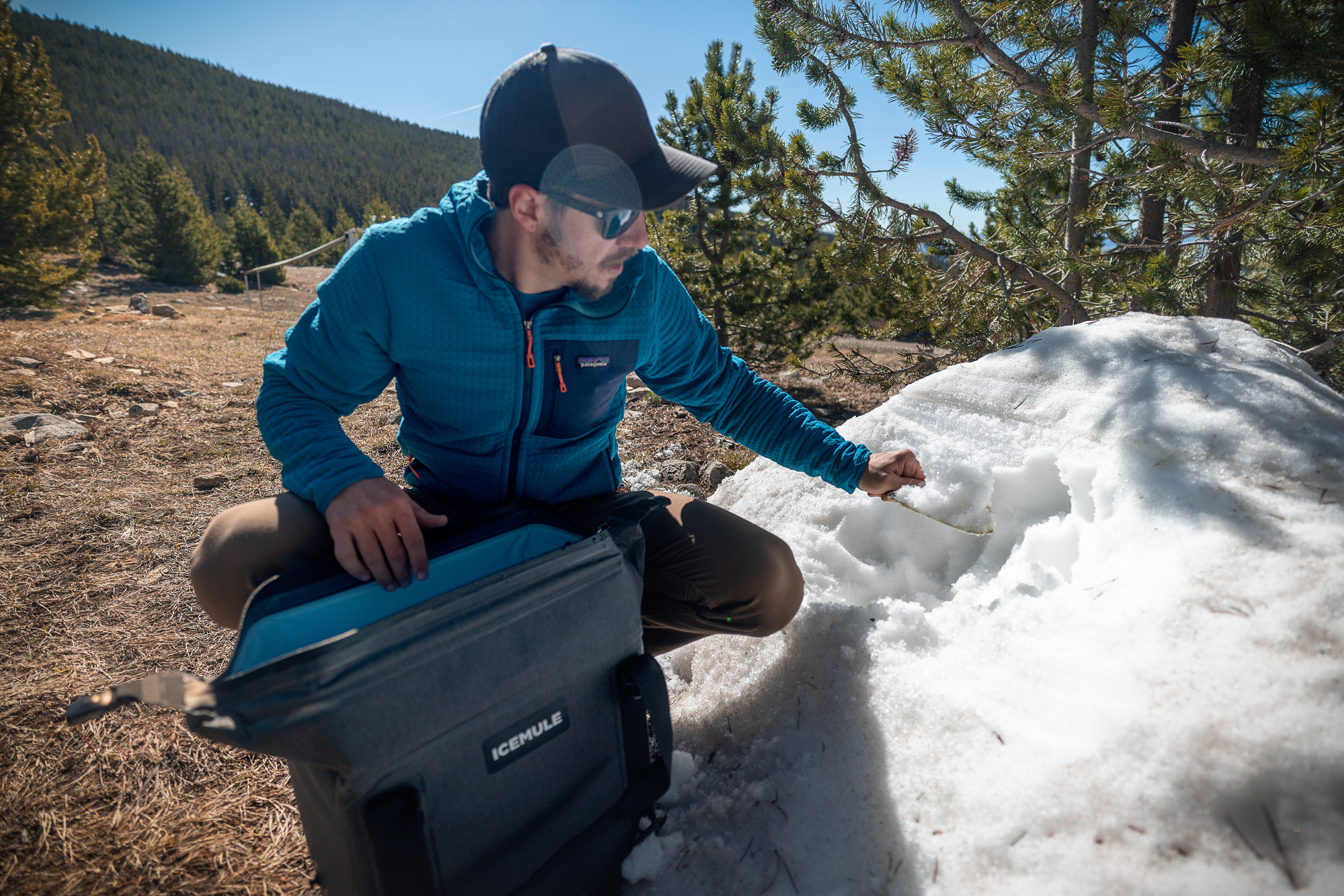Editor’s Note: This article was originally published in Overland Journal’s Spring 2022 Issue.
Soft-sided coolers have gotten good—really good. From the back seat of your truck to your campsite and on the trail, they provide cold storage for food and drinks, with waterproof closures and excellent ice retention. But beyond these fundamental functions, they are also significantly lighter than traditional coolers and more comfortable to carry.
Cooler comfort? Yes, it’s a thing. Did you know that instead of hauling around a fully loaded, rigid cinderblock of a cooler by your side (smashing your shins, wrenching your arm out of its socket), you could instead be wearing a flexible, supple, backpack-style cooler? And if the backpack isn’t your jam, there are also tote-style soft coolers with comfortable padded slings that you can easily toss over your shoulder.
Despite the fact that soft coolers are lightweight and flexible, every model in this test held ice for at least 24 hours, many of them longer. Since the majority of my vehicle-based outings happen to be 24-48 hours long, I found all of the products contained in the following pages to be sufficient for my needs, and their smaller size and lightweight construction are advantages on shorter trips.
But this doesn’t mean that you should consider replacing your hard-sided cooler with a soft-sided one. Instead, consider that both of these products have scenarios where they excel, so in the long run, owning both will set you up for success.
Types of Soft-sided Coolers
Within the range of soft-sided coolers, the products that I tested fell into two categories: backpacks and tote bags. As you might have guessed, backpack-style coolers are designed to be worn on both shoulders, while tote bags can be carried in hand or worn across the chest with a strap. Generally speaking, the backpack-style coolers that I tested were better for transporting larger loads for longer distances (like a short hike to a camping spot), while the totes are fitting if you don’t need to haul your cooler very far.
Across the seven coolers that I tested, there were also multiple closure styles, including zippers and roll-top closures.

Taking Coolers into the Field
While this test wasn’t as scientific as some of our other product evaluations, I did take our gaggle of soft-sided coolers into the field on multiple occasions to determine their suitability for use on the road.
Insulating ability, carrying comfort, and closure hardware are the primary qualities paid attention to, but other notable features or functions are also identified.
Biases
As always, the potential for bias exists, although I have made every attempt to be fair in assessing the products in this test. Nevertheless, aesthetics, advertising campaigns, and brand familiarity are all factors that play into our interpretation of a product’s performance.
Takeaways
One of the most critical cooler qualities to me was the ease of loading and unloading items. Based on this, I found the Yeti Hopper BackFlip, the IceMule Traveler, and the Pelican Dayventure to be the most agreeable products to take along. I discovered that the exterior pockets were only valuable to me when they were waterproof, and I have no need for daisy chains (I hate having things dangling and swinging around while I’m carrying any kind of bag).
Given that soft-sided coolers are ideally suited to day trips, when deciding which product to invest in, I would encourage you to find one that fulfills the following two qualities: easy to load and unload, with a reliable closure system that can be easily maintained. All other attributes are bonuses.
Yeti Hopper BackFlip 24 | 24-quart Capacity


Yeti was founded in 2006 with a mission to “build the cooler you’d use every day if it existed.” And apparently, they had some great ideas of what that cooler would look like. They quickly proceeded to redefine the expectations of what hard-sided coolers were capable of, and nowadays, their products are used by pros and weekend warriors alike across the outdoor industry.
But it wasn’t just the above-average ice retention of their initial coolers which let Yeti rise above the competition. Their product design has always been rooted in function, leading to success in other categories of outdoor equipment, including drinkware, bags, camp furniture, and even some pet products.
When it comes to soft-sided coolers, Yeti has a variety of products, such as the Hopper Backflip backpack tested for this article. The Backflip is Yeti’s first backpack-style soft cooler, and because of this specific use-case, it was designed to be taller and wider than the rest of the Hopper line. It features a waterproof Hydrolok zipper closure, ergonomic adjustable shoulder straps, an adjustable sternum strap, a removable waist belt, exterior handles, and multiple daisy chains.
In practice, the Backflip had my favorite opening out of all the soft coolers in this test, since after unzipping the lid and flipping it back, the cooler remained open and easy to load up with food and drinks. Its HydroLok zipper was stiff to operate, with multiple people commenting that they wished it was easier to slide (it does come with lubricant, though). However, despite the effort required to open and close it, it was indeed leakproof and did not fail during testing.
After many instances of wearing the Backflip, I concluded that it was not the most comfortable product in the lineup; our spines have curves, and the back panel of the Backflip does not (it does have some flexibility, though). It’s also limited on padding, resulting in pressure points where the cooler contacts the upper back and the vicinity of the sacrum. And because the shoulder straps lack load-lifters, it’s difficult to transfer the weight of this cooler onto the hips, leading to shoulder fatigue when carrying it long distances.
Even with the Backflip’s shortcomings in the way of comfort, it does offer significant volume given its exterior dimensions. And when it came to real-world use, it was capable of retaining ice for more than five days (daytime temps in the 60s, 30s at night) thanks to closed-cell rubber foam insulation.
$300 | yeti.com
Pelican Dayventure Backpack Cooler | 19.4-quart Capacity
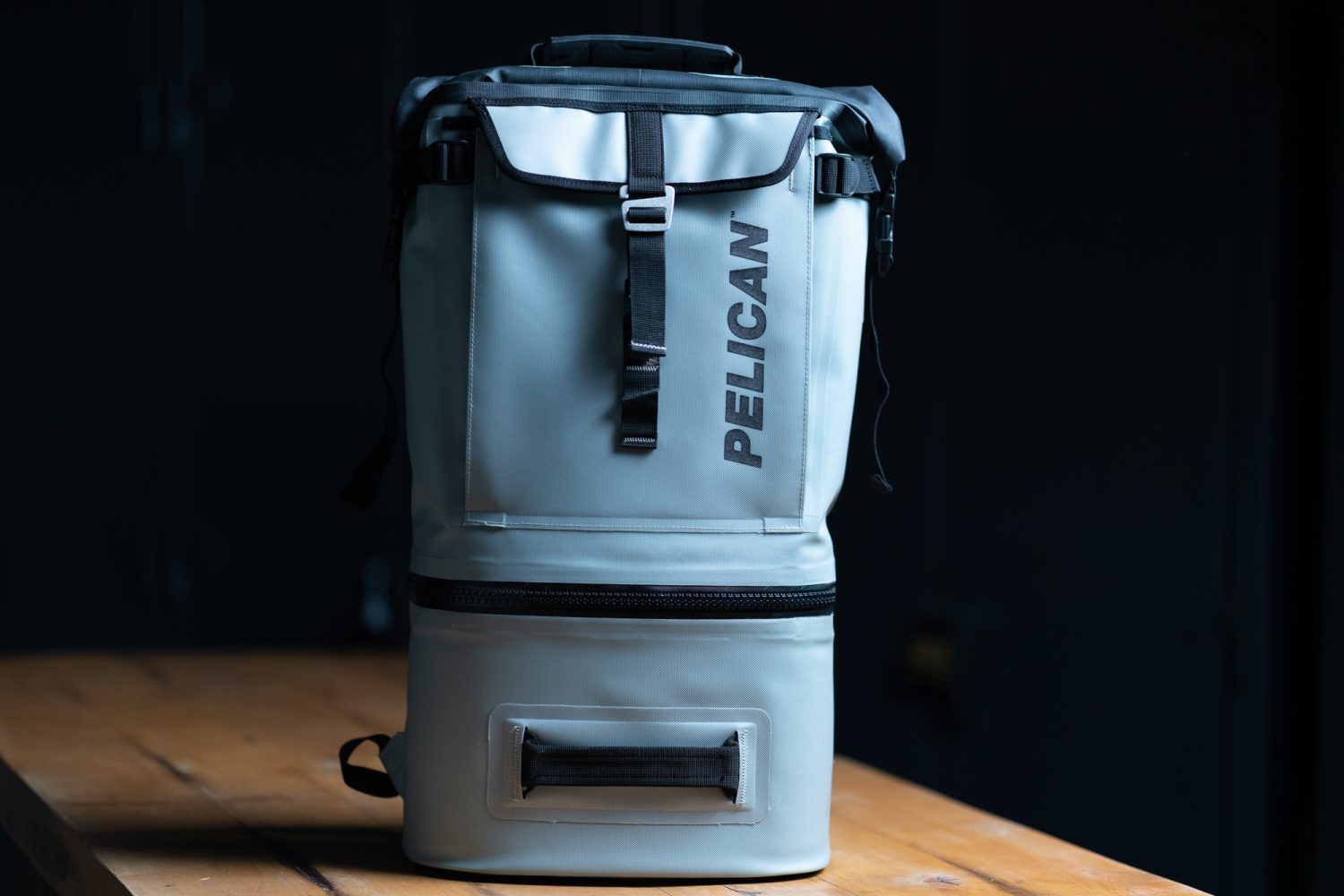
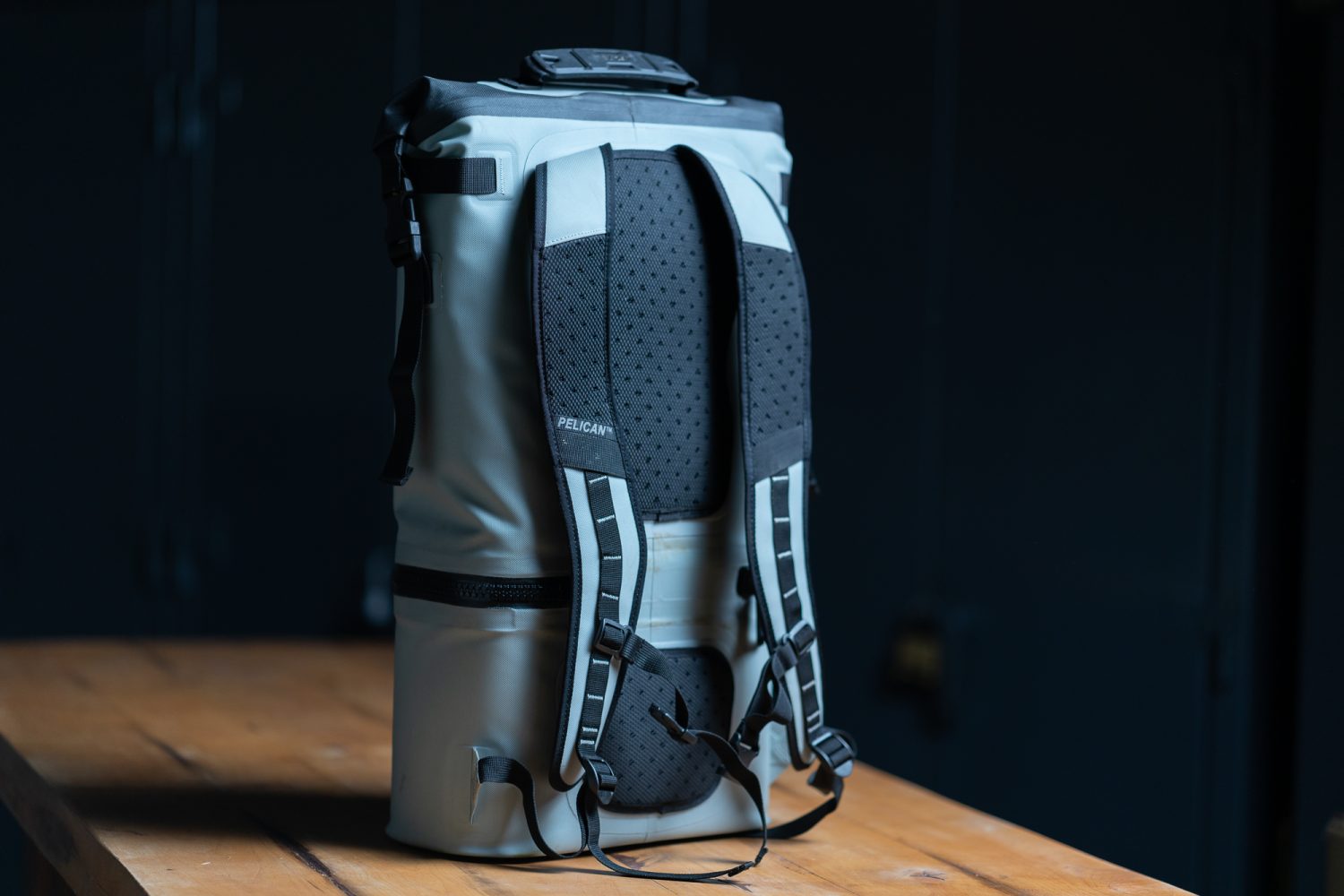

Most people know Pelican for its ultra-durable hard cases that protect delicate equipment (cameras, medical devices, and computers). In fact, Pelican got its start in the world of diving, innovating a variety of products, including a floating dive marker and a waterproof medical kit.
And unbeknownst to me, Pelican has been in the cooler business for quite some time too. Their biothermal division designs and manufactures cold-storage solutions for the biotechnology and medical fields, mostly for shipping materials that must be kept within specific temperature parameters while in transit.
One of the lightest and slimmest products in our group, the Dayventure backpack-style cooler was a bit of an outlier with its two separate compartments. The lower compartment is insulated and features a leak-resistant zipper, while the larger upper compartment is not insulated and features a roll-top closure (like a dry bag). The Dayventure also has an exterior water-resistant (not waterproof) pocket for small items like keys or a phone.
The Dayventure is a backpack; however, unlike the others in our group, it’s a bit more flexible, resulting in a slightly more comfortable experience when wearing it. It also offers breathable padding where it contacts your back, resulting in a higher level of overall comfort. While it does have a sternum strap, there is no waist belt, so the full weight of its contents is supported by the shoulders.
The insulated compartment (the bottom portion of the pack) is roughly the size of a six-pack. Because of its small volume, it is best suited to single-day endeavors when you only need enough room for a couple of small food items or some drinks.
The upper compartment is water-resistant and designed to keep items dry or keep wet sundries isolated from everything else. You can put ice or cooler packs in this upper compartment (leak-resistant, thanks to its roll-top), but its insulating qualities are limited, so I wouldn’t count on this compartment for keeping things cool for more than a half-day. Accessing the lower cooler compartment with the upper compartment fully loaded felt awkward at best.
Despite its limitations to function solely as a cooler, having two separate compartments does provide versatility that you won’t find in any of the other soft-coolers in our test. At just over 9 pounds, it’s also one of the lightest items in our test group.
$250 | pelican.com
Canyon Coolers Nomad Go | 21-quart Capacity


Canyon Coolers came onto the scene of high-end hard-sided coolers with a smart design update: a vertical sidewall. Their goal was to make it easier to pack provisions into their coolers as well as store them amongst other items with vertical sides in tight spaces (i.e., the back of your overland rig). The simple design choice was appreciated, and along with their competitive price point, Canyon Coolers has gained traction in several segments of the outdoor industry.
When investing in a high-quality (usually expensive) cooler, it’s reassuring to know that it’s covered by a solid warranty. In the case of Canyon Coolers, all of their products are covered by their “[Blank] Happens Warranty,” a program they claim is the only no-hassle lifetime warranty in the industry. It’s important to point out that this warranty is only truly a lifetime warranty for their hard-sided coolers. Soft coolers are covered for 66 weeks from the date of purchase. The good news is that if you accidentally run over your cooler, they’ll replace it (the only thing not covered by the warranty is misuse or abuse.)
The Nomad Go is a big, chunky, heavily insulated backpack-style cooler that was quite comfortable to carry. It sits nicely against the back with cushy padded mesh panels. Its lightly padded shoulder straps are comfortable, but given that there is no waist belt or load lifters, the full weight of the cooler ends up on your shoulders. Because of this, I wouldn’t recommend selecting it for carrying a heavy load or for long distances.
Straightforward in overall design, it has one main compartment featuring a watertight (unsure that it is genuinely waterproof) zipper and a smaller exterior compartment for items like keys or a phone.
The Nomad was one of the best insulated coolers in our panel of products. However, it was also one of the most difficult to load and unload because of how much insulation it has just inside its opening. Canyon recommends utilizing a cooler pack or a water bottle to wedge it open for easier loading. Another option is to get a second person to help hold it open. Although it has a middle-of-the-road 21-quart capacity, the Nomad had the largest exterior dimensions out of any other cooler in the group.
Finally, Canyon has a section on their website worth exploring called “Ice Academy,” which is there to help you get the most out of any cooler: canyoncoolers.com/explore/ice-academy/.
$230 | canyoncoolers.com
Engel HD20 | 22-quart Capacity


Engel is well known for their DC refrigerators and freezers, but did you know that they also make a range of hard- and soft-sided coolers as well? All of their soft-sided units are covered by a one-year limited warranty as long as they are purchased directly from Engel or an authorized third-party distributor.
Before getting into the details of the HD20, it’s useful to point out that Engel dedicates a section of their website to helping you maximize ice retention in any type of cooler. Their list provides practical steps like buying an extra bag of ice to pre-cool your cooler (yes, this makes a big difference), adhering to a mathematical ice-to-contents ratio, and refraining from draining the meltwater because it helps insulate the remaining ice. If you are looking to get the most out of an Engel cooler (or the cooler you already own), check out engelcoolers.com/pages/keep-ice-longer.
As far as the HD20 is concerned, it was one of my favorites in the group, specifically for use on road trips. This was due to a combination of factors, including the volume, sufficient for one to two days of perishables, and the footprint, which I always managed to squeeze into the trunk of our small car. I also liked the combination of grab handles and a removable shoulder strap which was comfortable when carrying the cooler for short distances.
The materials of the HD20 proved to be very durable, and in testing, they held up in a variety of desert and mountain environments without any notable damage. An extra thermoplastic urethane (TPU) membrane on the cooler’s exterior adds to its durability. An exterior zippered pocket holds small items like car keys, and a variety of sewn nylon loops provide additional attachment points.
The welded waterproof and air-resistant zipper was a little difficult to operate and needs occasional lubrication for optimal function. But on the flip side, it did its job of keeping moisture inside the cooler.
When it came to ice retention, the HD20 was excellent. As long as we adhered to the 1:3 ratio of provisions-to-ice, the ice always outlasted the food. In one instance, I still had intact ice cubes after using the cooler for four days.
Additionally, a vacuum valve allows users to suck extra air out of the cooler’s insulation layer, apparently improving its efficiency. While there is sound science behind this feature, I often found myself reluctant to dig the vacuum out to perform the task.
$200 | engelcoolers.com
Hydro Flask Day Escape Soft Cooler | 21-quart Capacity

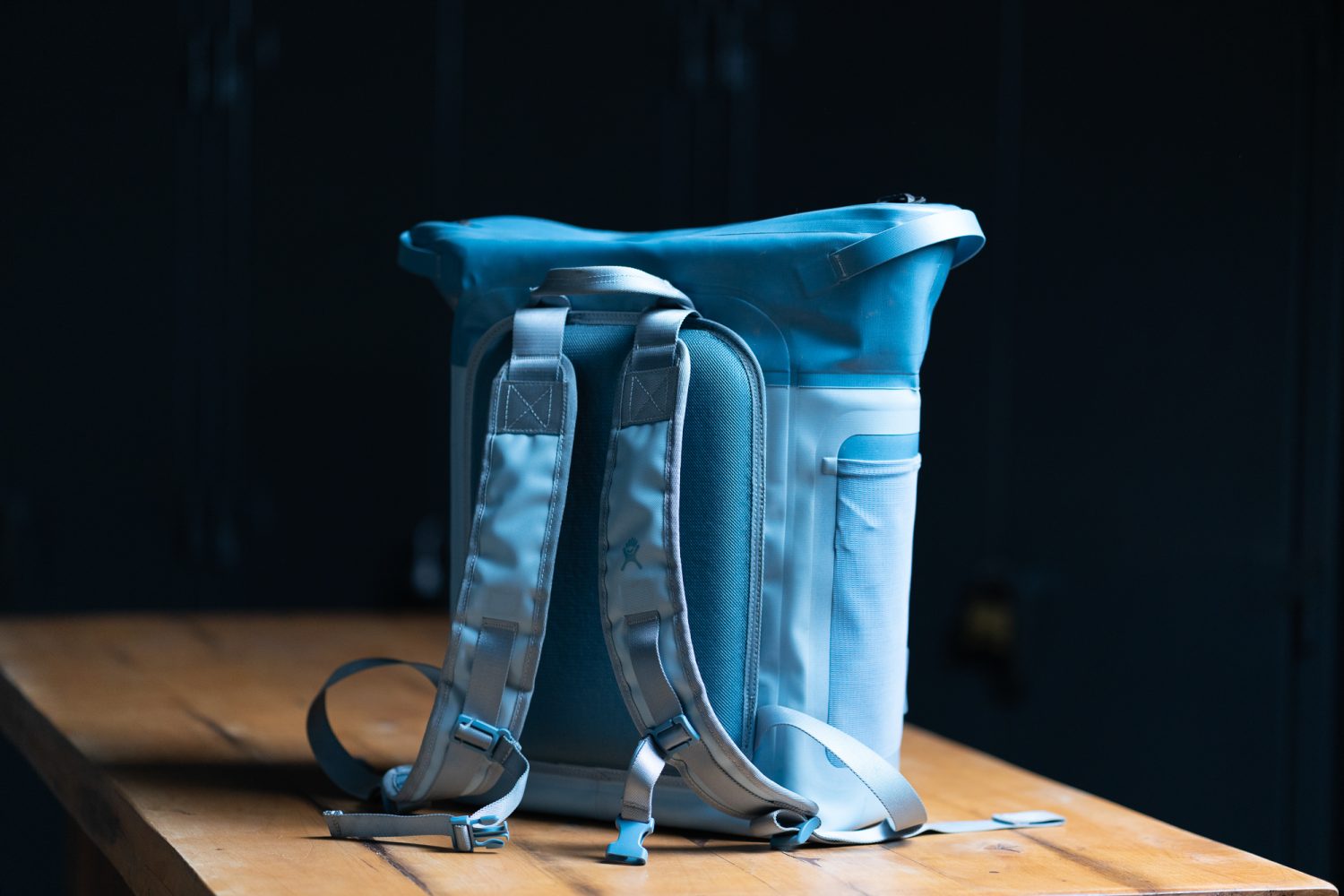

Oregon-based HydroFlask got its start offering colorful, insulated stainless steel drinking bottles. But their product line has grown and can now be more broadly defined as providing what people need to spend time outdoors. They take their design cues from Mother Nature, “…the best designer there is. There’s never anything extra—every choice is made for a reason.”
But Hydro Flask does more than talk about loving the environment. Through their Parks For All program, they have supported public green spaces to promote healthy lifestyles, donating over $1.9 million and counting. In a climate where consumers are increasingly asking for companies to do more than just please stockholders, this model of giving back through civic initiatives is becoming more and more popular.
The company’s entry into the field of soft-sided coolers is the 21-quart Day Escape backpack-style cooler, a very lightweight option utilizing a unique TruZip waterproof zipper. Other features include a built-in stretchy utility pocket and three grab handles for carrying the cooler short distances. The strap system, reminiscent of MOLLE webbing, lets users attach storage pouches (purchased separately) to the cooler. These pouches are waterproof and are designed to keep items like cell phones or keys dry and secure in wet environments.
Hydro Flask’s stated 36-hour “cool” rating felt accurate in the field, and ice retention of 24+ hours is possible depending on ambient temperatures. It should be noted that this particular cooler is on the lighter side, making it an ideal choice for shorter day trips. Although keeping perishables cold for multiple days in a hot environment will likely be a challenge.
From a design perspective, this backpack-style cooler was comfortable to wear, although, like all of the other backpacks in the test, it does not have load-lifter straps or a waist belt, so don’t expect it to be an ideal choice for a full day of hiking.
The TruZip waterproof zipper is similar to an oversized ziplock bag closure (no teeth) and was the easiest zipper to operate in the group. It did not leak when tipped over—great for the back seats of the multiple vehicles it was tested in. Despite smooth opening and closing, the top of this cooler does not stay open, which makes loading and unloading slightly challenging.
$200 | hydroflask.com
Orca Walker Tote | Volume not specified
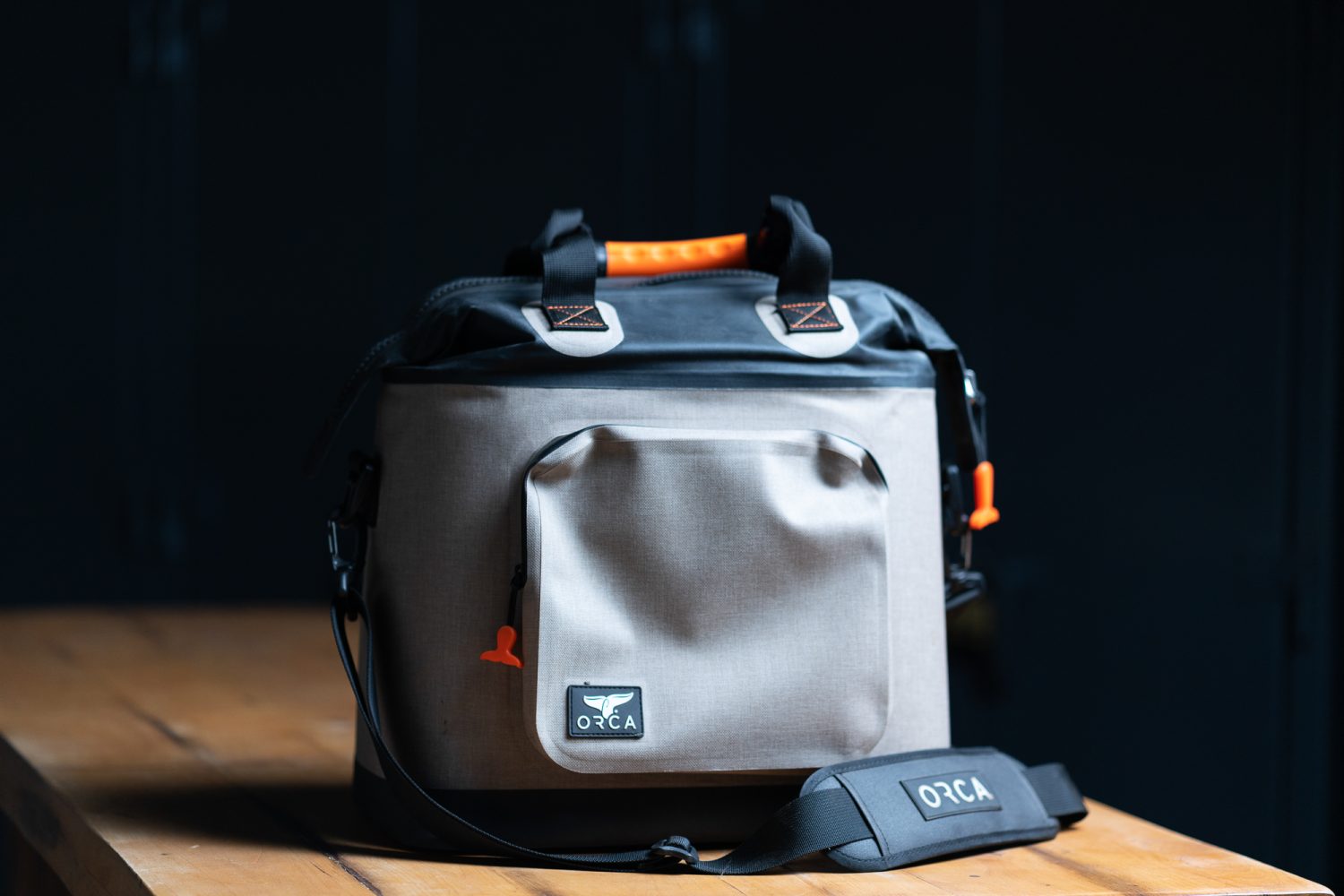

Orca Coolers got their start in 2012 in Nashville, Tennessee, initially offering a single 75-quart hard-sided cooler. Now, they’ve got a broader portfolio of products, including a variety of hard- and soft-sided options as well as drinkware.
Keeping manufacturing in the USA has been very important to Orca from its inception. While they are able to produce their hard-sided coolers in Ohio, drinkware and soft-sided cooler manufacturing facilities are non-existent in the US. Realizing that they needed to compromise to offer a variety of merchandise, they decided to import these products unfinished and perform the remaining processes of assembly, powder-coating, decoration, laser-engraving, and packaging here in the US.
Upon inspecting the Walker Tote for the first time, I was immediately struck by its appearance. It was one of the nicest-looking products that I tested. Its outermost layer was more of a fabric rather than the plastic finish of the other coolers. I was happy to ultimately find out that its good looks didn’t affect its ability to retain ice. Nonetheless, the attention to aesthetics was a welcome change and definitely looks handsome whether you take it to the beach or lake.
While I am often wary of things that look pretty, I was happy to find that the Walker was well-made, too, with a solid and durable build. Its base features an embossed Orca logo and is made from a material that Orca calls tough skin. This durable yet flexible outer material protects the base from rough surfaces, and in my testing, it held its own in sharp, rocky terrain.
The tote features a water-resistant main zipper and a waterproof exterior front pocket with enough room for a few small items like a wallet, cell phone, and car keys. I didn’t experience any issues with zippers leaking during my testing, and additionally, all of the cooler’s seams are ultrasonic RF welded (just like whitewater boats). The Walker has a removable shoulder strap with swivel attachments and a sliding shoulder pad which makes carrying it short distances comfortable.
Aside from the good looks and little details such as whale tale zipper pulls, another unique feature that makes this cooler stand out is the rounded plastic handles that have embedded magnets. Unlike the webbing handles of the other coolers, the split design used by the Walker utilizes magnets to hold the two plastic halves together when they are aligned. Once connected, this makes for a more ergonomic grip, especially with the cooler fully loaded up with ice and provisions.
$200 | orcacoolers.com
IceMule Traveler | 26.4-quart Capacity
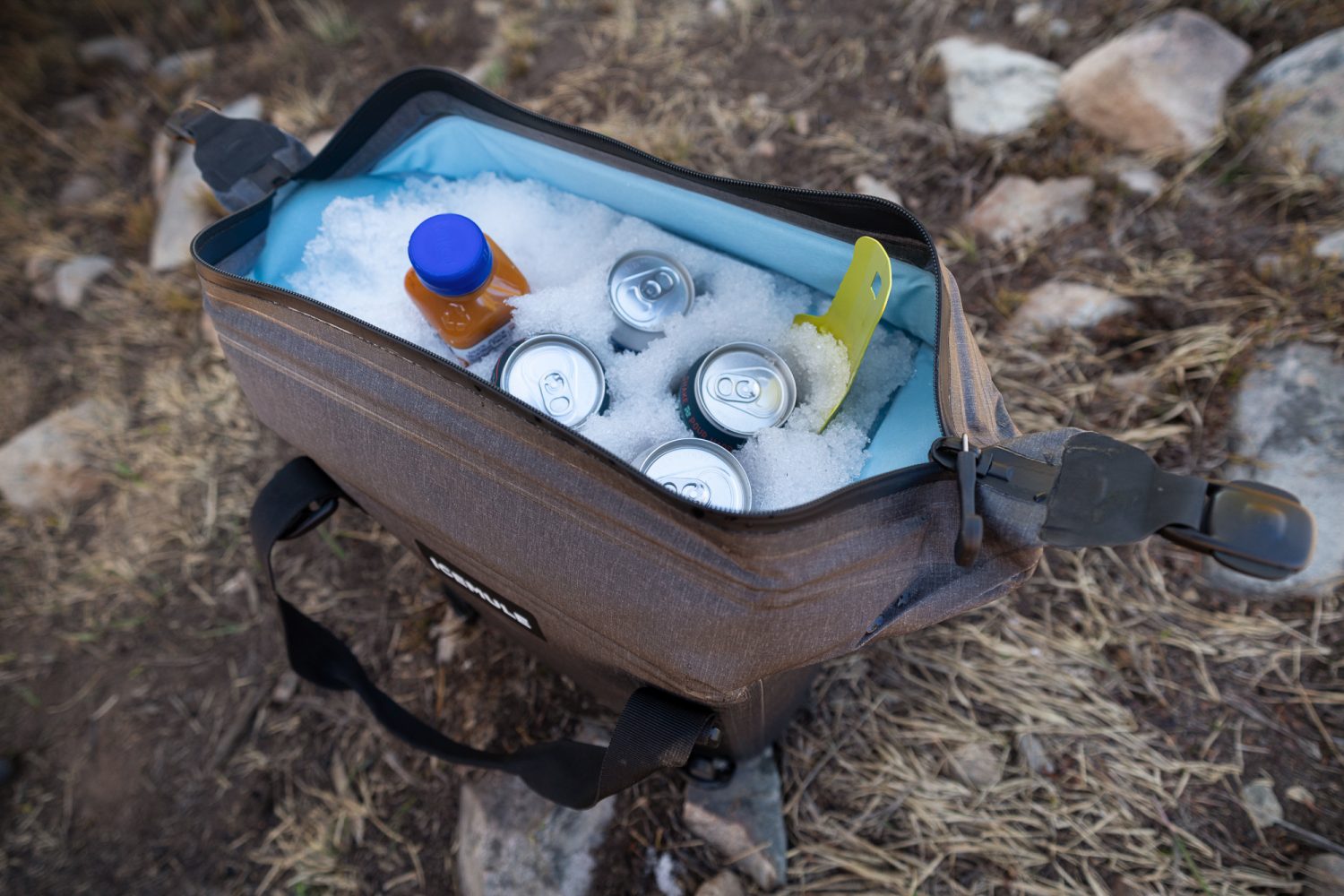


IceMule’s range of portable soft-sided coolers includes many roll-tops (think dry bag) as well as more traditional square and rectangular models, such as the Traveler. Their cooler technology has three main facets that make it unique: MuleSkin interior and exterior fabric, PolarLayer insulation, and the IM AirValve.
MuleSkin is a “tough…rugged shell” made of plasticized (i.e., waterproof) fabric on the outside, with a smooth version for the cooler’s interior. The unique PolarLayer insulation is made from foam, and in the Traveler, it is rated for 48 hours of keeping the contents of the cooler “cold.” Finally, the IM AirValve allows you to add extra air to the cooler’s insulation layer. This increases the insulating ability in addition to making the cooler buoyant so that it can float if it ends up in the water. Supposedly, this valve also lets you release air so that you can collapse the cooler, although I didn’t feel comfortable attempting this with the Traveler for fear I might damage it.
When it was time to put this cooler to use, I found it to have some of the best features in the group, but it also had some shortcomings, starting with its construction, which felt distinctly more delicate than the others. To be fair, the materials have held up, but I can’t say the same for the zipper that broke after less than five trips into the field with only gentle use.
Also questionable in terms of long-term function, the Traveler utilizes some proprietary (or at least, very uncommon) pieces of plastic hardware for securing both sides of the zipper to the body of the cooler. I worry that if either of them were to break, it would be challenging to find replacements. To be fair, they have held up so far.
But now, onto the good. The Traveler has a very smartly-designed Bowhead Top—essentially a stiff metal rod—which holds the opening of the cooler wide for easy loading and unloading. This was one of my favorite features out of any of the coolers in the test group.
The Traveler also had one of the most comfortable carrying systems, and although slightly unconventional in appearance, it was a pleasure to use. It is basically a removable harness that places the cooler down low, right against your sacrum. If there are any firefighters reading, it’s similar to a line pack but much more comfortable.
Even with its shortcomings, which in this case would be covered under warranty, the Ice Mule Traveller is still a compelling option to consider.
$200 | icemulecoolers.com
…
Read more: The Big Chill: Overland Journal’s Cooler Test
Our No Compromise Clause: We carefully screen all contributors to ensure they are independent and impartial. We never have and never will accept advertorial, and we do not allow advertising to influence our product or destination reviews.


